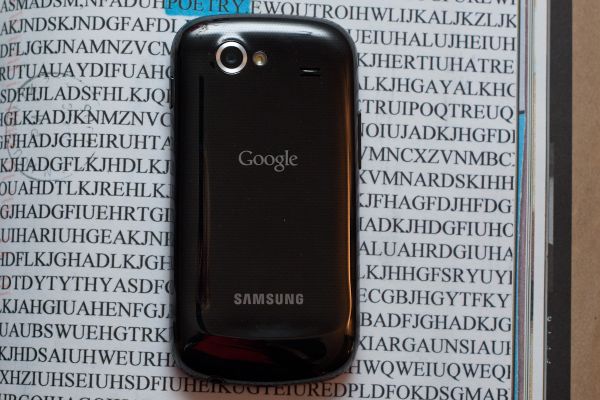Nexus S and Android 2.3 Review: Gingerbread for the Holidays
by Brian Klug on December 14, 2010 4:08 PM EST- Posted in
- Smartphones
- Samsung
- Nexus S
- Gingerbread
- Android 2.3
- Mobile
Conclusions and Final Thoughts
Right now, there's no doubt about it that the Nexus S is the best Android phone on the market, but that's almost purely a function of its status as the only Android device with Gingerbread at the moment. That isn't to say the hardware choices Google made with Samsung are bad, they're just a bit puzzling. Lacking external storage is hard to swallow for enthusiasts, even if the "USB Storage" partition works just like an SD card when connected over USB. Not having an HSPA+ baseband - even if it doesn't do much in terms of actual realizable speed at the moment, T-Mobile is already fast - is a checkbox feature that will give many pause as well. That said, the Nexus S does have notable extras that other phones lack such as the contour display and an NFC controller, but those aren't of immediate utility. NFC looks like something a number of other smartphone makers are going to get serious about supporting, and Google plans to quickly add support for P2P and card emulation modes. Using a smartphone as a hotel key, bus pass, or movie ticket sounds like something even I would've stuck firmly in the science-fiction category a decade ago, but that's what those modes will enable.
If the previous Nexus One was any indication, the real value from owning an actual google-branded phone is that you get updates first. Carriers and other vendors should take note - people want software updates, and fast. Promise quick platform updates, deliver them on the date you set, and you'll build some brand loyalty.
The Nexus name should always mean that the device is something of a rubric for other Android devices on the same software platform. It's the hardware the Android team will be carrying around when thinking about what changes to make to the platform, it's the device developers will likely use as a baseline reference design for performance and testing. Plus, it's stock Android - there's no T-Mobile branding, no HTC Sense, no carrier skins. Going forward, there's also going to be no moratorium on carrier-skinning with Gingerbread, so getting a device with pure unadulterated Android like the Nexus S really is a value-added proposition.
Going forward, I hope Google continues to make a Nexus device which represents their own pure vision of the smartphone space. The G1 served that purpose, then the Nexus One, now the Nexus S takes that role. I'm still waiting for that completely carrier-agnostic device with pentaband UMTS support and maybe some CDMA/EVDO goodness tossed in there, but that's likely a long ways off.
 Photo courtesy Sarah Trainor
Photo courtesy Sarah Trainor
I really feel like putting all my weight behing a total recommendation of the Nexus S would be easier were it not on T-Mobile alongside two equally competent, HSPA+ enabled, 45nm Snapdragon packing devices, namely the G2 (which also has stock Android) and the myTouch 4G. The 45nm Snapdragons with Adreno 205 GPUs have proven completely competent performers (and I'm not even finished testing the myTouch 4G yet), with Adreno 205 performing just shy of SGX 540, but worlds better than Adreno 200. If HSPA+ support really matters to you, even if it isn't the MIMO/Dual-Carrier variety that's going to make a huge difference quite yet, you're honestly better off getting one of those two phones and waiting the months (or however long it will be) before they see a Gingerbread build. If you want Gingerbread (and also awesome hardware) right now, get the Nexus S.
The other big question mark on the horizon is what dual-core SoCs from TI, Qualcomm, and NVIDIA will do to the smartphone landscape. It's possible that we'll see battery life improvements alongside another dramatic change in performance, but success all depends on how polished software, drivers, and the devices themselves are. It's a gamble for certain to wait and see what hardware will crop up at CES, but one month isn't very far away. For now however, the Nexus S is king of Android.











73 Comments
View All Comments
Manabu - Wednesday, December 15, 2010 - link
For who write in japanese, the Simeji keyboard loads by default in a mode with arrows, buttons for cut & paste, etc.evan919 - Tuesday, December 14, 2010 - link
You guys write some of the best mobile reviews on the web.About the GPS performance. GPS w/ WiFi location works well on my Galaxy S Captivate. However, relying on standalone GPS is where the problems come. Is there a way you can just use standalone GPS on the Nexus S and report back on GPS performance using Google Navigation?
Brian Klug - Tuesday, December 14, 2010 - link
Awesome to hear, glad you enjoy them!So I just turned WiFI-augmented location services off, reset the phone (powercycled), and then fired up GPS test in my office. It took under 10 seconds to get full 3D GPS fix and seems completely fine SNR-wise. Looks good to me.
-Brian
HMTK - Tuesday, December 14, 2010 - link
And how good does this thing sync with Exchange? I'm getting a new smartphone and if 2.3 is a lot better than 2.2, I'll wait.blueF - Tuesday, December 14, 2010 - link
Great review Brian. I always wait for the anandtech reviews before making a decision on buying a phone. Also I was wondering if the Nexus S has a gorilla glass screen. I have so far been unable to find any reliable info on that.Brian Klug - Tuesday, December 14, 2010 - link
So I've been trying to find out whether the Nexus S has gorilla glass myself, but haven't found anything definite. I'll update if I do find out, however ;)-Brian
tjcioffe - Tuesday, December 14, 2010 - link
swype's keyboard has arrow keys. swipe from the swype symbol to the SYM key right next to it.vshah - Tuesday, December 14, 2010 - link
have you considered running battery life tests without task killers running? if android is constantly restarting processes only to have them killed by the task killer, it could be skewing results. if you ran the numbers without the task killer, i'd like to see those. is that standard practice for all android battery life tests?Thanks for the review...i'm still not sure whether or not I should upgrade from my N1
Brian Klug - Tuesday, December 14, 2010 - link
So system panel doesn't constantly kill tasks like other task killers. I kill everything before I start the test, allow things to launch again, and then unplug them from the power and the test begins.We've been pretty consistent doing this for all of our Android battery life tests. ;)
-Brian
vol7ron - Tuesday, December 14, 2010 - link
That's good to know, I thought this was a new scanner feature of the phone. Thanks for clarifying.